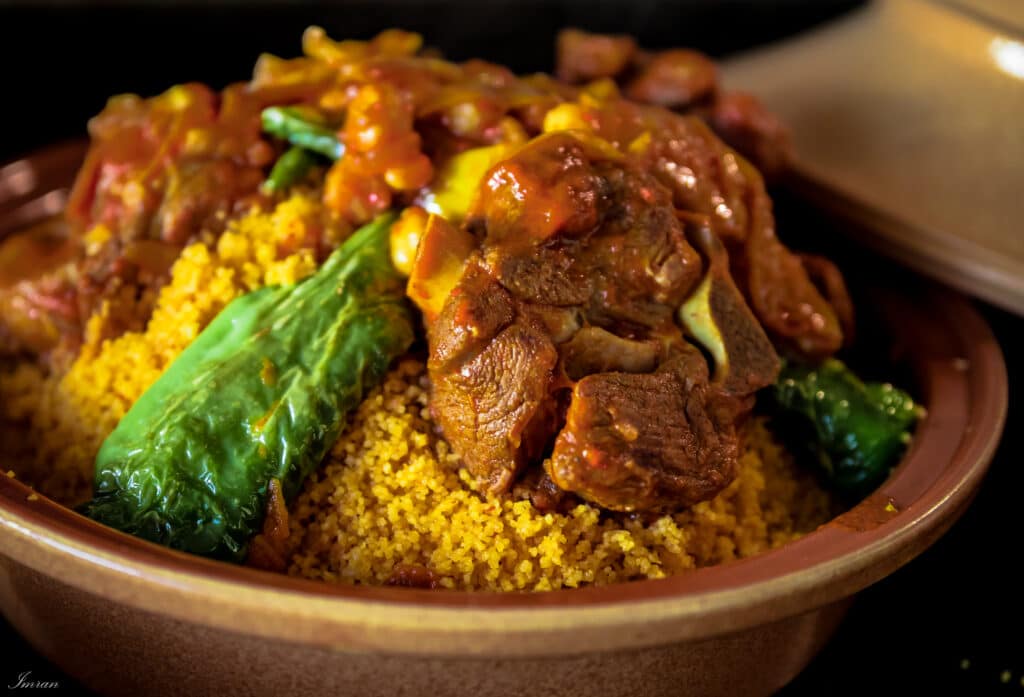Couscous, the versatile North African delight, has captured the hearts and palates of food enthusiasts worldwide. Beyond its culinary prowess, Libya holds a special place in the history of couscous, where it has been cherished for centuries. Join us on a journey through the origins, preparation, and cultural significance of Libyan couscous.
The Origins of Couscous in Libya
Couscous, believed to have been discovered by the Berbers in the 7th century, quickly gained fame for its simplicity and nutritional value. These resourceful indigenous people found that rolling tiny grains from durum wheat flour created a product that was easy to cook and store.
Despite its labor-intensive preparation, couscous became a beloved staple among North Africans and Libyans. Its ability to harmonize with a variety of ingredients led to its designation as the national dish of Libya and Morocco. UNESCO even recognized its cultural significance by including it in its Intangible Heritage list in 2020. Couscous is not only a staple food but also a central element in social gatherings and celebrations, symbolizing unity and hospitality. In Tunisia, couscous preparation in Tunisia is an art passed down through generations, often involving family members coming together to create this beloved dish. The variations in recipes across different regions highlight the adaptability and importance of couscous in North African culinary traditions.

The Traditional Preparation Process
Creating couscous the traditional way is a labor of love that requires patience and skill. Durum wheat semolina is sprinkled with water and meticulously rolled into tiny granules, ensuring uniformity. These granules are then sieved and steamed over a pot of gently simmering stew.
This method allows the couscous grains to absorb the flavors of the stew below while maintaining their unique texture. After cooking, the couscous is fluffed with a fork or fingers to prevent clumping, resulting in light, fluffy grains ready to be served.
Libyan Couscous
Libyan couscous is a reflection of the country’s rich culinary heritage. Lamb takes center stage, complementing the mildness of couscous with its robust flavor. Root vegetables like carrots and turnips add a touch of sweetness, while spices such as cumin and coriander infuse aromatic complexity. Chickpeas provide both texture and a distinctive flavor.
Here’s a simple recipe for traditional Libyan couscous with lamb and vegetables:
Ingredients:
– 2 cups of durum wheat semolina
– 1 lb of lamb, cut into chunks
– 2 carrots, peeled and chopped
– 2 zucchinis, chopped
– 1 onion, finely chopped
– 4 cloves of garlic, minced
– 1 can of chickpeas, drained and rinsed
– A handful of fresh parsley, chopped
– Salt and pepper to taste
– 1 teaspoon of cumin
– 1 teaspoon of coriander
– Olive oil
Instructions:
1. Prepare the couscous by sprinkling semolina with water and rolling it into tiny granules. Sieve for uniformity.
2. Heat olive oil in a large pot over medium heat. Brown the lamb chunks on all sides.
3. Add onions and garlic, sauté until translucent.
4. Add carrots, zucchinis, chickpeas, spices, salt, pepper, and enough water to cover everything. Bring to a boil, then simmer.
5. Place prepared couscous in a steamer or colander above the simmering stew and steam for about 20 minutes until fluffy.
6. Fluff up the couscous using a fork or fingers to prevent clumping.
7. Serve hot with ladles of stew, garnished with fresh parsley.
Serving and Enjoying Libyan Couscous
In Libya, couscous is a communal experience, symbolizing warmth and camaraderie among family members. It’s typically served family-style, with a large platter at the center of the table. Diners can enjoy it with their fingers or a spoon, savoring the harmony between the fluffy couscous and richly flavored stew.
Influence on Libyan and Maghreb Cuisine
Couscous goes beyond being a dish; it’s a symbol of hospitality and tradition. It holds memories of generations rolling couscous grains or sharing hearty meals during festive occasions. Beyond Libya, couscous has found favor in countries like France, Spain, and Italy, gaining recognition for its simplicity, adaptability, and delicious taste.
The Diverse Cuisine of Libya
Libyan cuisine is a fusion of Mediterranean, African, and Arab influences, boasting a rich diversity of flavors and ingredients. Fresh, locally sourced ingredients such as seafood, lamb, and vegetables play a central role. Spices like cumin, coriander, chili pepper, and saffron add depth to dishes, while olive oil, abundant in Libya, is a staple.
Apart from couscous, Libyan cuisine offers an array of delightful dishes.
Bazin, a hard dough served with various stews, and asida, a sweet porridge enjoyed during celebrations, showcase the country’s culinary versatility. Coastal areas feature grilled fish and shrimp stew, while inland regions favor meat-based dishes.
At Remitly, we’re on a mission to simplify international money transfers. Since 2011, millions have used Remitly for fast, transparent, and affordable transfers. Visit our homepage to learn more or download our app for seamless money transfers. For assistance, explore our Help Center.